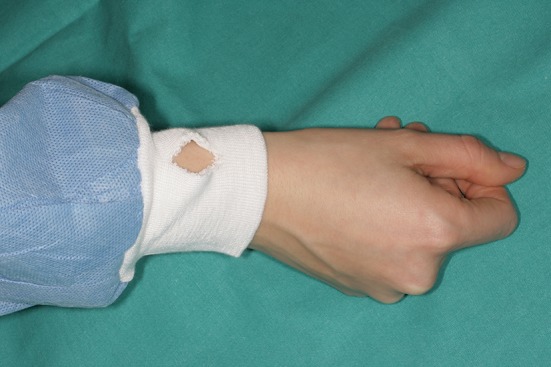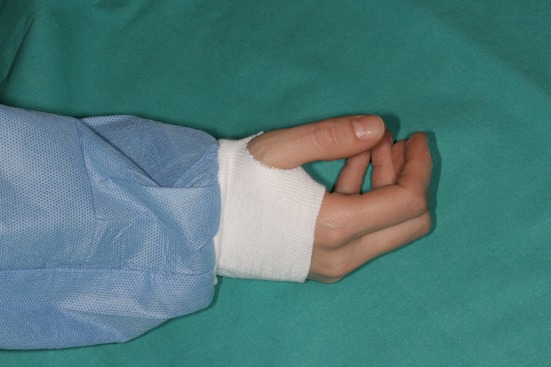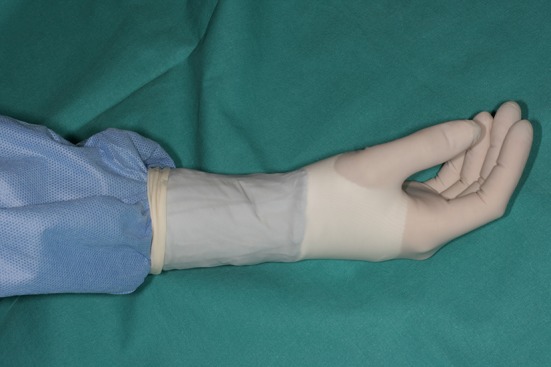Abstract
The gown-glove interface is the weakest point in the barrier system of gown and glove protection for the surgeon. We are herein presenting an easy modification in the cuff of the gown that increases the security of the gown-glove interface.
Keywords: Surgical gown’s cuff, Thumb hole, Contamination
The surgical staff is the main cause of microbial contamination during surgery. Reducing microorganisms concentration requires careful preparation of all the staff members. The gown-glove interface is the weakest point in the barrier system of gown and glove protection for the surgeon and other healthcare professionals (Fig. 1). In addition in long-term interventions the cuff of the gown is not considered sterile after changing the gloves, with the subsequent potential for the transfer of pathogens to both the patient and the surgical team [1, 2].
Fig. 1.

Gown-glove interface failure in common cuff design
Making a small cut in the cuff of the gown and introducing the thumb through this (Figs. 2, 3) prevents the sleeve from sliding up and ensures that the wrist and hand do not contaminate the surgical field (Fig. 4). Although the design of the surgical standard gown with a thumb hole is already marketed this is an easy modification. Using a disposable gown, the thumb hole increases the security of the gown-glove interface. We have not identified any problems with its use. Surprisingly, there are no other reports of this simple technique published in the literature.
Fig. 2.

A small cut is made in the cuff of the gown
Fig. 3.

Thumb introduced
Fig. 4.

The thumb hole increase the security of the gown-glove interface and prevents the sleeve from sliding up
Conflict of interest
The authors declare that they have no conflict of interest.
References
- 1.Edlich RF, Wind TC, Hill LG, Thacker JG. Creating another barrier to the transmission of bloodborne operative infections with a new glove gauntlet. J Long Term Eff Med Implants. 2003;13:97–101. doi: 10.1615/JLongTermEffMedImplants.v13.i2.40. [DOI] [PubMed] [Google Scholar]
- 2.Newman JB, Bullock M, Goyal R. Comparison of glove donning techniques for the likelihood of gown contamination. An infection control study. Acta Orthop Belg. 2007;73:765–771. [PubMed] [Google Scholar]


